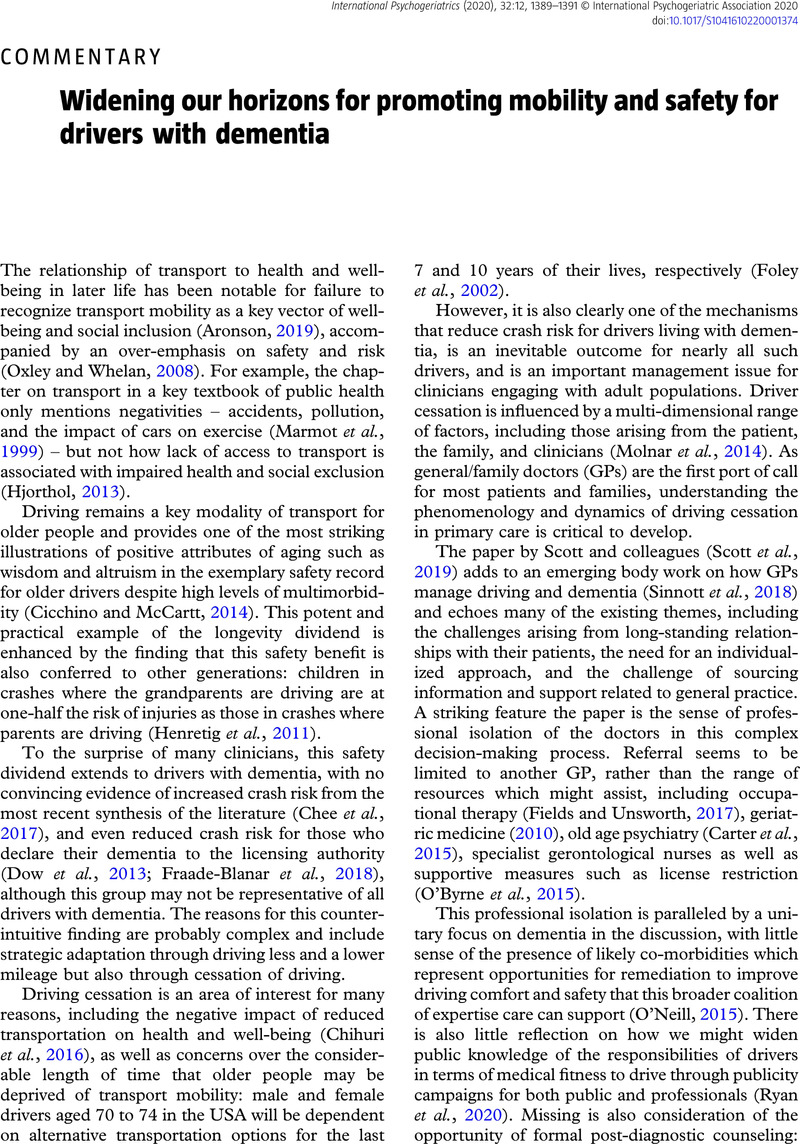Crossref Citations
This article has been cited by the following publications. This list is generated based on data provided by Crossref.
Pachana, Nancy A.
and
Pachana, Nancy
2020.
Implementation science in psychogeriatrics.
International Psychogeriatrics,
Vol. 32,
Issue. 12,
p.
1383.
Quirke, Martin
Bennett, Kirsty
Chau, Hing-Wah
Preece, Terri
and
Jamei, Elmira
2023.
Environmental Design for People Living with Dementia.
Encyclopedia,
Vol. 3,
Issue. 3,
p.
1038.
Spargo, Claire
Laver, Kate
Berndt, Angela
Adey‐Wakeling, Zoe
and
George, Stacey
2024.
Australian medical practitioners' perspectives about current practice relating to fitness to drive assessment for older people with dementia and mild cognitive impairment: A qualitative study.
Australasian Journal on Ageing,
Vol. 43,
Issue. 2,
p.
323.
Stasiulis, Elaine
Naglie, Gary
Sanford, Sarah
Belchior, Patricia
Crizzle, Alexander
Gélinas, Isabelle
Mazer, Barbara
Moorhouse, Paige
Myers, Anita
Porter, Michelle M.
Vrkljan, Brenda
and
Rapoport, Mark J.
2024.
Developing the Driving and Dementia Roadmap: a knowledge-to-action process.
International Psychogeriatrics,
Vol. 36,
Issue. 12,
p.
1157.



